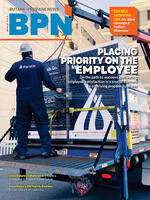
On a recent episode of the “Path to Zero” podcast, I spoke with Christine Obiaya, CEO of Heliogen. Her company uses concentrated solar energy, augmented with artificial intelligence, to create heat and energy storage for a variety of applications. I sat fascinated as she explained how her company’s technology combines with other technology to create green hydrogen.
So why was I, a propane guy, talking with a solar expert about green hydrogen?
The answer is simple: The drive for clean, efficient energy is not about different energy types and technologies battling for supremacy. Rather, it’s about industries collaborating and encouraging innovation to bring the best solutions to bear. Energy demand is growing, and consumers are more conscious than ever of the environmental and climate impacts of the energy choices they make. Minimizing those impacts is a key to survival in the clean energy future.
The propane industry is a player in that future, so forming relationships within and across industry lines is particularly essential.
On the research and innovation side, the Propane Education & Research Council (PERC) is investing industry dollars in partnerships that will pay dividends for years to come. Current research projects with the U.S. Department of Energy to study propane blends with dimethyl ether (DME) and with Colorado State University to study renewable propane in combined cooling, heating and power (CCHP) systems are laying a foundation for future generations of clean and efficient propane applications.
PERC also has a stake in technologies that are moving toward commercialization. In September 2023, PERC, Stanadyne and Katech jointly announced a breakthrough technology for fleet owners looking for a low-emission, high-efficiency and affordable engine solution. The innovation combines Stanadyne’s direct injection fuel pump and injector system with Katech’s vapor lock technology to create the industry’s first medium-duty engine system that can deliver propane autogas at a constant 350-bar pressure directly into the engine. For operators of medium-duty (class 3 to 7) vehicles, this represents a potential viable alternative to diesel and other fuels.
Products on the market now are demonstrating how propane collaborates with “competitor” energies to deliver clean, efficient performance. Hybrid heat pump solutions are a perfect example. Working with an existing thermostat, an air handler module communicates to a propane tankless water heater to circulate hot water through a hydronic coil that has been installed at the air handler. As electric heat pumps proliferate, propane can help their owners stay warm even at extremely low temperatures.
Even electric vehicle (EV) charging can be fertile ground for our industry. A propane-powered EV charger can be placed virtually anywhere, providing affordability and reliability for fleets and reducing range anxiety for drivers. In one of the more striking examples of technologies working together, a propane generator can combine with wind and solar power to create a microgrid that allows fleets to affordably implement a drop-in charging solution.
Make no mistake, competition between energy types is a real and necessary feature of the shifting clean energy landscape. Propane and its many applications offer unique advantages over other energy sources — portability, efficient performance, energy density and long-term storability are just a few. Renewable propane is a game changer for our industry, offering the same features and performance as conventional propane, but with a significantly lower carbon intensity.
Other energies can make compelling cases as well. The drive for market share creates walls between and within industries. What the above partnerships demonstrate is that in this era of energy transformation, collaboration can be just as valuable as competition to the propane industry and to society.
What does this all look like for the propane marketer or equipment dealer? As many have already figured out, relationship building works wonders at the individual business level.
Leverage your existing partnerships and seek new ones that open doors to new opportunities. Nurture relationships with builders, equipment manufacturers, HVAC companies and others you deal with on a regular basis. Talk to fleet owners in your area, even those who are embracing EVs. If they’re not interested in propane autogas yet, find out what their charging needs are and how propane can satisfy those needs. The Learning Center at propane.com has practical training and resources to help businesses build and optimize relationships with all kinds of entities.
Even if a direct partnership seems like a distant possibility, a little curiosity never hurts. Will PERC ever team up with Christine Obiaya and Heliogen on a project combining propane with solar thermal storage? I don’t know, but I am a fan of technology and I cheer on innovation wherever I see it happening. I have welcomed more than 100 guests on “Path to Zero,” many of them holding views much different than mine. I have found that conversation, even with those who at first look like competitors, keeps possibilities alive.
The future of energy could be defined by narrow thinking and winner-take-all competition. If you pay attention to many news outlets, you see that’s how the issue tends to be framed. I believe that future could be defined by a spirit of collaboration, embracing a multitude of innovations and hybrid solutions that feature multiple technologies and fuels. For the propane industry, for the environment and for society, the second approach is the clear path forward.


